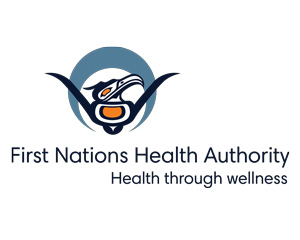A message from Dr. Kelsey Louie, FNHA Acting Deputy Chief Medical Officer

We don't often think about it, but one of the most routine things many of us do – get around in vehicles, either by driving ourselves, or as passengers – is also one of the most dangerous. As driving is essentially operating heavy machinery, it is a big responsibility that requires our full visual attention (i.e., eyes on the road), our hands on the wheel (not texting, changing songs, eating, etc.), and our full mental/cognitive attention and respect.
Over 108,000 people were injured in an incident involving a motor vehicle in 2021, with over 8,100 of those being serious injuries. In the same year, 1,768 Canadians died from a motor vehicle collision.
The Canada Safety Council's annual National Safe Driving Week (Dec. 1-7) aims to raise awareness of the importance of road vehicle safety with the goal of lowering rates of accidents, injuries and fatalities. Motor vehicle accidents are not only dangerous for drivers, but passengers, pedestrians, cyclists and other people who share the roads, including construction crews.
In previous years, National Safe Driving Week has highlighted some of the most serious issues surrounding motor vehicle accidents:
-
Distracted driving due to technology. Driving requires your full attention. Aim to reduce ways you can be distracted by technology (i.e., put your cell phone away). Distracted driving is one of the largest causes of collisions, injuries, and deaths on Canada's roads.
-
Driving while impaired. Impairment is not just about alcohol consumption. It includes smoking marijuana, which can reduce reaction time behind the wheel, and the use of certain prescription medications.
-
Driving in treacherous conditions. Canada gets cold! Sudden drops in temperature after a rainfall can cause deadly ice, and heavy rainfall, sleet, or snow can cause poor visibility. Consider winterizing your vehicle by installing snow tires, ensuring your lights work properly, having a fully charged car battery, giving yourself plenty of time to stop in slippery conditions, and scraping that snow off your car.
Protect your Community with a Road Safety Grant
The British Columbia Vision Zero in Road Safety Grant program provides funding to support communities in BC in planning to make their roads safer.
Indigenous communities (Bands and governments), including non-governmental organizations (such as Friendship Centres and other charities) working in Indigenous communities, can apply for a grant to address a local road safety issue impacting vulnerable users of roads, i.e., pedestrians, cyclists, roadside workers.
Grants up to $20,000 are available through the Indigenous-focused “Stream 2" funding to make infrastructure improvements to roads, enact policies or enforcement measures, launch educational campaigns, or carry out other projects that make roads safer for travel. Some First Nations communities in BC have already used these grants to improve lighting and visibility, create flashing cross-walks, build bus stops, add speed bumps, or add traditional stop signs in their traditional language. These were all community-driven ideas!
Stream 2 is intended to ensure that Indigenous communities are able to set and direct their own road safety priorities, in alignment with the BC government's commitment to reconciliation.
Applications are open now until Jan. 15, 2024 at 3 p.m. Decisions and awarding of funding will be announced in March of 2024. Start your application or read more about it, including what other First Nations communities have done with their grants,
here.

